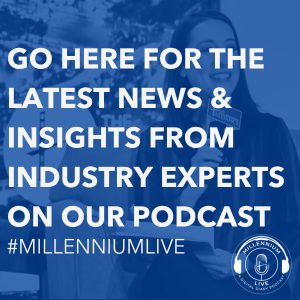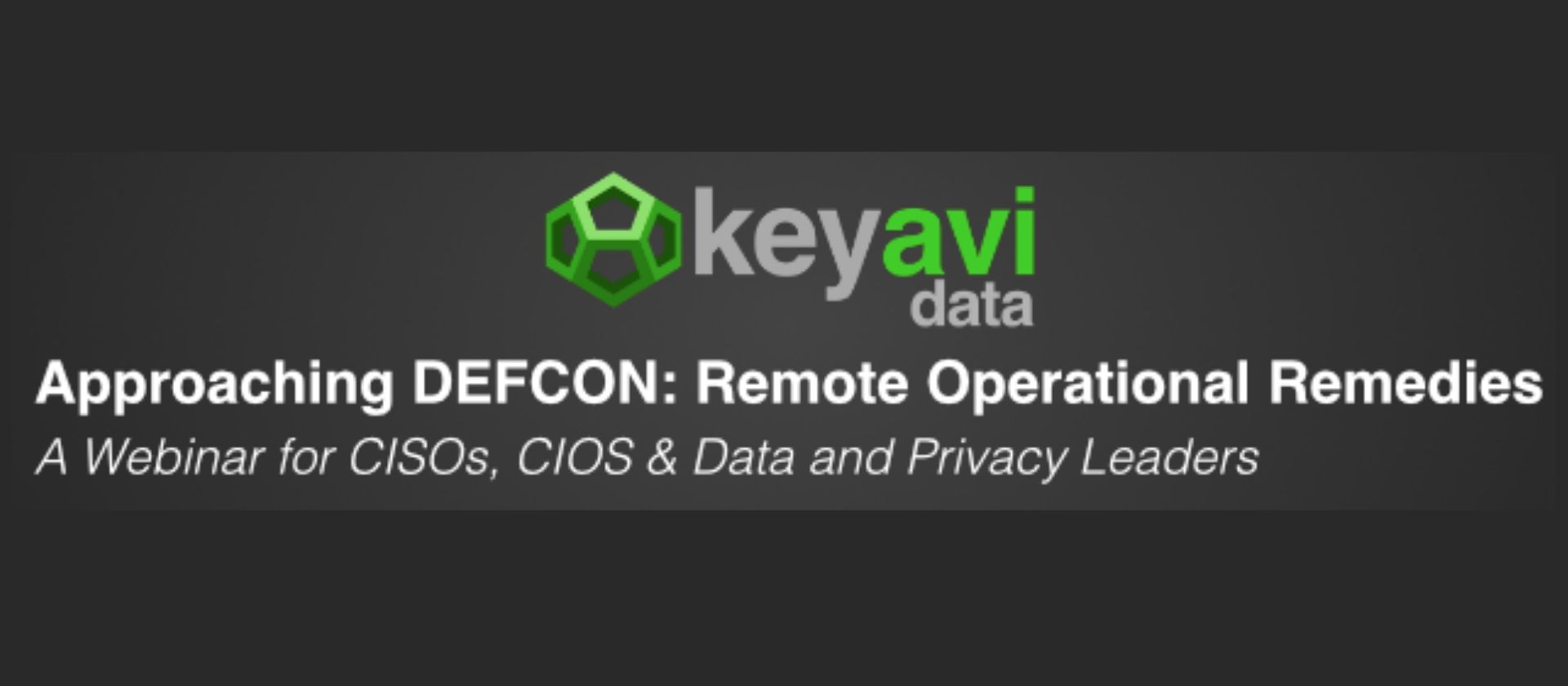Every job has at least one mind-numbing task that employees dread doing, but it’s imperative that it gets done. Whether it’s something as simple as data entry, or complex as analyzing hundreds of datasets from several platforms and drawing comprehensive insights. In all industries at every seniority level, there’s brunt work.
Take healthcare for example. Countless healthcare networks are finally moving from paper to digital, but this process requires admin staff to spend hours upon days copying and pasting text from different databases and documents, spurring a 42% employee turnover in some cases.
Tech leaders have hyped up Automation and AI to be the inevitable solution to the dilemma, but with hundreds of AI services in-market and very few companies adopting them, many industry leaders feel led astray by high expectations.
Let it be known: patience is a virtue, and I think we’re just on the cusp of a major shift. In our own network of thousands of C-Suite executives in cybersecurity, healthcare & marketing roles, AI implementation is a leading department objective for 2020 projects. It’s been estimated that AI generated $1.3B in revenue in 2019, and in the year prior, the AI market grew by over 63%.
Sure, AI isn’t at the point of being broadly adopted by companies, but there are countless skills and technologies that are currently in-market that may surprise you.
COVID-19 has prompted immediate advancements in the way patients are treated — Tampa General Hospital has recently unveiled AI tools that immediately detect patient symptoms through a face scan, and it can even make predictions on the likelihood of more severe symptoms appearing, like respiratory failure. Advanced technology is also being implemented on R&D for the cure, with AI currently drawing insights from data mining 29,000+ academic articles on the virus.
The 24-hour news cycle has spurred the need for constant content from news outlets, and AI plays a driving force in making that become possible. Some of the compelling media outlets are already using AI to write content, like The New York Times, Associated Press, Reuters and Washington Post. In fact, Associated Press contributes 30,000 articles a month to AI functionality.
The software process known as “Natural Language Generation (NGL)” has the ability to uniquely structure a written narrative in several different formats, like social media statuses, reports, essays, or even poems. You might be thinking that content written by a robot would read as “bot speech” lacking complex sentence structure, but just look at what’s possible when you give an AI a one-sentence prompt.
We’re living in an unprecedented period in human history. Wifi was invented just over 20 years ago, and look at the leaps and bounds we’ve made since then — today, robots can actually READ our brainwaves and translate them into speech. How might AI technology evolve in our lifetimes alone?
For the time being, in most companies and industries, AI will be tasked with the mundane “brunt work”, it maximizes efficiency, and allows for workers to focus on big picture projects. But ultimately, this shift will change the nature of our work, evolving the workplace as we know it. Forbes made the case that humans may become “more human and empathetic to drive customer intimacy” and “collectively make society and our environment better” because of it, and perhaps there is some truth to that.
I sat down with Allan Andersen from the leading AI technology company IPsoft to discuss one of their latest projects, Amelia. She’s part of the world’s first marketplace for digital employees, which offers companies the ability to scale, lower costs, provide greater efficiency and enhanced productivity.
EF:
IPsoft is the pioneer of digital employees, can you tell us about how this project began and what went into building your digital marketplace for employees?
AA:
Correct, Amelia was the world’s first virtual agent when launched in 2014. In 2018 we launched a first embryo of a marketplace, based on Amelia´s extensive experience and established track record of delivering ROI at many Fortune 500 companies. This was the first off-the-shelf marketplace for AI solutions specifically designed for the banking, telecom, hospitality, insurance and healthcare industries, to provide state-of-the-art AI solutions for any business or government organization. Back in 2018, our marketplace primarily had reusable components that would serve as a kick-start to many projects, but work still had to be done by the adopting customer. This has now evolved into digitalworkforce.ai, a fully-fledged store of digital employees with roles and skills to augment human employees, and most importantly this can be activated with minimal effort of behalf of the adopting customer.
EF:
Much of the talk surrounding the current state of AI relates to mundane tasks, like data entry or chatbot utilities- what is the most unique skill in Amelia’s arsenal?
AA:
We continue to innovate at a rapid pace. In my opinion, the most unique skill these days is introduced in Amelia V4 – a completely new level of integrated end-to-end learning. Previously, building new end-to-end skills had several manual steps including back-end integrations into applications. IPsoft defines these end-to-end processes as those that start with an individual requesting assistance and continuing through either speech or text to a front- or back-office employee. Then the employee has a dialog with the individual customer and accesses one of more applications to resolve the request. Amelia can observe that entire process and synchronizes all the parts into a coherent flow, i.e. intent, entities, dialog, process, and most importantly system tasks and actions (i.e. how the human user performs actions in enterprise systems), to build an automation which can perform this task without any human involvement.
EF:
Amelia is currently being utilized as an IT operations expert, HR representative, and customer service agent amongst several other roles- are there any plans to expand on her capabilities? What roles do you see as a good opportunity for Amelia in the future?
AA:
The future is going to be collaborative. Our digital colleagues can assume entire roles, such as insurance adviser or IT operations specialist, but we do not purport that these solutions should entirely replace your human insurance advisers and IT operations specialists. Instead, our solutions eliminate the unnecessary complexity between humans and enterprise systems. Whether they’re human workers or customers, our digital colleagues empower all users — regardless of technical proficiency – to easily access information and services.
EF:
The AI space is seeing exponential growth, but many of the tools available today have left leaders disillusioned or led astray by high expectations. What separates run-of-the-mill automation from game-changing AI solutions?
AA:
It really is very simple but easy to mess up. Successful AI implementations are like a great experience at a 3-star Michelin restaurant – it requires several aspects to come together fairly flawlessly. However, once you have mastered the dishes it can be more rinse-and-repeat.
The first aspect is not surprisingly superior ingredients, i.e. the technology platform. Amelia is obviously leading the field from a conversational AI perspective, but it also includes built-in API integrations to backend systems, intelligent escalation systems with human and AI collaboration, etc. so it is a complete end-to-end platform.
The second aspect is a well-functioning team of cooks, waiters, and maître d’, i.e. our implementation teams, cognitive engineers, conversational and UX designers. IPsoft has been implementing Amelia successfully for many enterprise customers over the past 6 years, we have the staff, tools, and processes to do the rinse-and-repeat.
Finally, the head-chef designing the dishes/menu, i.e. the world of conversational AI, that is the use-cases we will implement. Our team has the experience to select and deselect what works and does not work, sometimes that means saying no to a customer for a particular use-case and sometimes that means being innovative and trying something that has never been done before.
EF:
How do you think the growing implementation of AI in the workforce will affect employees? And how might AI positively impact our world?
AA:
Much has been written about automation and AI within the enterprise as job killers. However, digital employees, in particular, can open up opportunities for new services, products and go-to-market models that will lead to higher-value and higher-paying jobs. Naturally, some tasks will be automated, especially those that are repetitive and lower value. This has happened throughout history and almost nobody wants to step back into doing these things once they have been automated.
Also, enterprises are implementing automation and cognitive AI that handle extreme high-volume tasks at scale, as well as process consumer transactions — everything from credit card disputes and payment processes to account issues. In tomorrow’s world, there won’t be enough humans to deal with that scale. The COVID-19 pandemic has shown increases in customer service demand for some enterprises far outpaces their ability to deliver.
EF:
Do you think we’re set to see major changes in AI within the next five years? If so, what do you expect to see?
AA:
Yes, and 5 years is a very long time in AI. I think the biggest thing is going to be “Combinatorial Innovation” where ability such as Conversational AI will be combined with other technologies – old and new – to create new disruptive products and services. We moved from a web-drive world to a mobile-drive which started around 2010, 2020 will be the era of a semantic-drive world or as we call it the “invisible UI” where people transact with a system purely through voice.
Allan made an excellent point on the issue of bandwidth. Amidst the COVID-19 pandemic, providing aid for the unemployed has become a massive and unsolvable issue. Employment offices are closed for in-person assistance, phone lines are jammed and websites are constantly crashing, ultimately leaving people with nowhere left to turn. That means that the number of people in need of unemployment benefits is well beyond the 6.6 million that had the opportunity to file in the last week alone. In crises like this, there’s simply no way to address the unprecedented volume with systems we currently have in place. An AI solution would prove to be a game-changer in this process, and perhaps save the economy from further calamity.
AI has long held the stigma of potentially being the greatest existential threat in our history, and undoubtedly, these technologies must be properly regulated- this cannot become the wild west (or should I say… Westworld.)
On the flip side of the token, these innovations can enable us in times of crisis, and on the regular day-in and day-out, employees can work to their full potential if employers can automate tasks that are simple yet time-consuming. Can you imagine work prior to the creation of Excel? Keep in mind that is a recent innovation, it debuted just 35 years ago. The world as we know it today is a far cry from 50 years ago — global technology has innovated every industry, and there’s no possibility that it’s slowing down. The workforce will need to acclimate, just as it always has. Humans have the remarkable ability to adapt, and in the years to come, AI has the potential to open market opportunities that are inconceivable to us today, much like the shift to the web in the ’00s and the shift to mobile in the ‘10’s.











